- Home
- Peter Ackroyd
Charlie Chaplin Page 26
Charlie Chaplin Read online
Page 26
He attended a dinner party at a town house in Manhattan, where he was obliged to shake the hand of every guest; he was so exhausted that he even shook the hand of his wife and of the waiter who brought him a glass of wine. At a screening of The Idle Class at the Philharmonic Hall on the following evening the audience rose at the end in a standing ovation with calls for “Charlie! Charlie!” He told the assembly that “I’m being born again. It’s easy for you but it’s very difficult for me to speak tonight, because I feel very emotional.”
He talked about the occasion with a reporter from Life magazine. “My God,” he said, “the affection of the people. So sweet.” Then he added that they were “like children, after they’ve been slapped down, and they’re sorry they’ve done something.” But the mood of resentment passed. “Thought I was going to blubber like a big kid. I cannot cope with emotions any more.” He was more reflective still. “What was real was afterwards, here in the hotel, after everybody had left and gone home and I felt as Hamlet felt. ‘So now I am alone.’ It sort of jumped me back into the beginning of my career. Very vivid. I had the same sort of depression inside me.” He may have recalled an evening in the spring of 1913 when, at a performance of Wagner’s Tannhäuser in New York, he had burst into tears. He was asked if he felt any bitterness for his treatment in the 1950s. “No, no, I don’t feel anything at all.”
He flew with Oona to the West Coast and, on arriving in Los Angeles, he told those waiting to greet him that “it’s good to be back in New York.” There were times when he was no longer alert and lucid. He had come to attend the Oscar prize-giving ceremony, at the end of which a celebration of Chaplin’s life and career was screened. When the screening was over the footlights went up to reveal Chaplin alone upon the stage, whereupon he was greeted with an unprecedented ovation. The cheering and applause lasted several minutes. He was presented with an especial Oscar “for the incalculable effect he has had in making motion pictures the art form of this century.” Another standing ovation followed, and he seemed to be moved almost to tears. He waved his hand, and blew a kiss to the audience. “Words seem so futile,” he said at last, “so feeble.”
He was now very tired and, after returning to Vevey, he suffered a bad fall and injured a central vertebra in his back. He did not often leave the house now, and could not walk far without assistance; he also suffered from gout. He did not care to receive visitors often but one dinner guest recalled that he kept his eyes upon the plate and ate very slowly. He read and reread Oliver Twist, perhaps as a reminder of an older London. In his last years Oona would take him round the grounds of the house in a wheelchair.
He had the persistent fear that he would not be remembered. When he was not recognised, in earlier years, he had grown uneasy and even angry. He had always to be seen and known. Now in his last years he was sometimes overwhelmed by a more general sense of oblivion. In 1974 he collaborated with the writer Francis Wyndham on a photographic memoir entitled My Life in Pictures. Wyndham recalled that Chaplin required the warm light of his wife’s care. “He would not let her out of his sight. If she moved or looked as though she might be going out of the room he became frightened.” The strain upon Oona may be imagined.
In the spring of 1975 he made the journey to London, where he was to be knighted by the queen. He had once said that “Mr. Chaplin” was his name and he was proud of it; but he took considerable pleasure in becoming Sir Charles Chaplin. He had wanted to walk the thirty feet towards the queen, but had to be pushed in a wheelchair by an equerry. In the summer he returned to London, and to his familiar fifth-floor suite in the Savoy, but he fell on his back and had to be returned to Switzerland in the care of a twenty-four-hour nurse.
Chaplin receives his knighthood, 1975.
Throughout that year, and the next, Chaplin’s condition worsened, and he found it difficult to communicate; there were times when he lapsed into somnolence, and on one occasion could not remember the name of the mother of his two eldest children, Lita Grey. In June 1976, however, he was reported as saying that “to work is to live—and I love to live.” Oona recalled that she was woken at four in the morning by Chaplin talking to himself about his films, saying “and they are beautiful, and I’ll never make them again.”
He suffered a stroke soon afterwards that left him partially paralysed. He found it difficult to recognise people whom he had once known well. The film director Peter Bogdanovich contemplated a documentary on Chaplin’s life but one of his associates recalled that when they arrived at Vevey, “we discovered that Chaplin was no longer Chaplin. He had almost completely lost his memory, he was a body almost without a mind. He could hardly answer the questions; we heard only monosyllables, barely intelligible non sequiturs.” His youngest son, Christopher, recalled that “my father became uncommunicative in his last year or so … my most vivid memory of him in that last year was that I used to sit across from him at the dinner table and sometimes he would just stare right at me. He had the most piercing blue eyes. I often wondered what he was thinking.”
The strain of caring for him continually was compounded by the fact that slowly he withdrew into himself; Michael Chaplin recalled that he was “vanishing away, slowly drifting away.” He seemed in the end to be at peace, but in effect he had withdrawn into a vast and silent sphere of self-regard. His wife would wheel him down to the shore of the lake and then along its bank. In the last months of his life their butler would drive them down to the shore, and they would sit looking out at the water. He was still brought to the table for meals, and Oona Chaplin would help him to eat. She would then wheel him in front of the television, where he would watch news programmes and old films.
Only in the last three weeks of his life was he confined to his bedroom, where he needed oxygen to breathe comfortably. He died in his sleep before dawn on the morning of 25 December 1977. He had always hated Christmas. He was buried at the cemetery in Vevey two days later. So departed a great cockney visionary who was, for some years, the most famous man on earth.
Bibliography
Anthony, Barry: Chaplin’s Music Hall (London, 2012)
Asplund, Uno: Chaplin’s Films (Newton Abbot, 1973)
Bengtson, John: Silent Traces (Santa Monica, 2006)
Bessy, Maurice: Charlie Chaplin (London, 1985)
Bloom, Claire: Limelight and After (London, 1982)
Bowman, W. D.: Charlie Chaplin (London, 1931)
Brown, Pam: Charlie Chaplin (Watford, 1991)
Brownlow, Kevin: The Parade’s Gone By (London, 1968)
Brownlow, Kevin: The Search for Charlie Chaplin (London, 2010)
Chaplin, Charles: My Trip Abroad (New York, 1922)
Chaplin, Charles: My Autobiography (London, 1964)
Chaplin, Charles: My Life in Pictures (London, 1974)
Chaplin, Charles: My Father, Charlie Chaplin (New York, 1960)
Chaplin, Lita Grey: My Life with Chaplin (New York, 1966)
Chaplin, Lita Grey and Vance, Jeffrey: Wife of the Life of the Party (London, 1998)
Chaplin, Michael: I Couldn’t Smoke the Grass on My Father’s Lawn (London, 1966)
Clausius, Claudia: The Gentleman Is a Tramp (New York, 1989)
Cooke, Alistair: Six Men (London, 1977)
Cotes, Peter and Niklaus, Thelma: The Little Fellow (London, 1951)
Delluc, Louis: Charlie Chaplin (London, 1922)
Epstein, Jerry: Remembering Charlie (New York, 1989)
Fleischman, Sid: Sir Charlie (New York, 2010)
Flom, E. L.: Chaplin in the Sound Era (London, 1997)
Geduld, H. M.: Chapliniana (Bloomington, 1987)
Geduld, H. M. (ed.): Charlie Chaplin’s Own Story (Indiana, 1985)
Gehring, W. D.: Charlie Chaplin: A Bio-Bibliography (Westport, 1983)
Gifford, Denis: Chaplin (London, 1974)
Haining, Peter: The Legend of Charlie Chaplin (New Jersey, 1982)
Haining, Peter (ed.): Charlie Chaplin: A Centenary Celebration (London, 1989)
&n
bsp; Hale, Georgia: Charlie Chaplin (London, 1999)
Harness, Kyp: The Art of Charlie Chaplin (London, 2008)
Hayes, Kevin J. (ed.): Charlie Chaplin Interviews (Jackson, 2005)
Hoyt, Edwin P.: Sir Charlie (London, 1977)
Huff, Theodore: Charlie Chaplin (New York, 1951)
Isaac, Frederick: When the Moon Shone Bright on Charlie Chaplin (Melksham, 1978)
Jacobs, David: Chaplin, The Movies, and Charlie (New York, 1975)
James, Eric: Making Music with Charlie Chaplin (Folkestone, 2000)
Kamin, Dan: Charlie Chaplin’s One-Man Show (London, 1984)
Kamin, Dan: The Comedy of Charlie Chaplin (Plymouth, 2008)
Kamin, Dan (ed.): Chaplin: The Dictator and The Tramp (London, 2004)
Karney, Robyn and Cross, Robin: The Life and Times of Charlie Chaplin (London, 1992)
Kaushik, Manav: Recollecting Charlie (Gurgaon, 2009)
Kerr, Walter: The Silent Clowns (New York, 1975)
Kimber, John: The Art of Charlie Chaplin (Sheffield, 2000)
Larcher, Jérôme: Charlie Chaplin (Paris, 2011)
Louvish, Simon: Chaplin: The Tramp’s Odyssey (London, 2009)
Lynn, Kenneth S.: Charlie Chaplin and His Times (London, 1998)
Lyons, Timothy J.: Charles Chaplin (Boston, 1979)
McCabe, John: Charlie Chaplin (London, 1978)
McCaffrey, Donald (ed.): Focus on Chaplin (New Jersey, 1971)
McDonald, G. D., Conway, Michel and Ricci, Mark (eds.): The Films of Charlie Chaplin (Secaucus, 1965)
Maland, Charles J.: Chaplin and American Culture (Princeton, 1989)
Manvell, Roger: Chaplin (Boston, 1974)
Marriot, “A. J.”: Chaplin, Stage by Stage (Hitchin, 2005)
Mast, Gerald: The Comic Mind (New York, 1973)
Mellen, Joan: Modern Times (London, 2006)
Milton, Joyce: Tramp (New York, 1996)
Minney, R. J.: Chaplin: The Immortal Tramp (London, 1954)
Mitchell, Glenn (ed.): The Chaplin Encyclopaedia (London, 1997)
Neibaur, James L.: Chaplin at Essanay (London, 2008)
Okuda, Ted and Maska, David: Charlie Chaplin at Keystone and Essanay (New York, 2005)
Oleksy, Walter: Laugh, Clown, Cry (London, 1976)
Parkinson, A. F.: Charlie Chaplin’s South London (London, 2008)
Payne, Robert: The Great God Pan (New York, 1952)
Quigly, Isabel: Charlie Chaplin: Early Comedies (London, 1968)
Reeves, May and Goll, Claire: The Intimate Charlie Chaplin (London, 2001)
Robinson, David: Chaplin (London, 1983)
Robinson, David: Chaplin: His Life and Art (London, 1985)
Ross, Lillian: Moments with Chaplin (New York, 1980)
Scheide, Frank and Mehran, Hooman (eds.): Chaplin’s Limelight and the Music Hall Tradition (London, 2006)
Schickel, Richard (ed.): The Essential Chaplin (Chicago, 2006)
Schroeder, Alan: The Beauty of Silence (New York, 1997)
Scovell, Jane: Oona (New York, 1998)
Seymour, Miranda: Chaplin’s Girl (London, 2009)
Smith, Julian: Chaplin (London, 1984)
Smith, S. P.: The Charlie Chaplin Walk (Ammanford, 2010)
Sobel, Raoul and Francis, David: Chaplin: Genesis of a Clown (London, 1977)
Turk, Ruth: Charlie Chaplin (Minneapolis, 2000)
Tyler, Parker: Chaplin: Last of the Clowns (New York, 1972)
Von Ulm, Gerith: Charlie Chaplin: King of Tragedy (Idaho, 1940)
Vance, Jeffrey: Chaplin (New York, 2003)
Weissman, Stephen: Chaplin: A Life (London, 2009)
Whittemore, Don and Cecchettini, P. A.: Passport to Hollywood (New York, 1976)
Wranovics, John: Chaplin and Agee (New York, 2005)
A NOTE ABOUT THE AUTHOR
Peter Ackroyd is the author of London: The Biography, Shakespeare: The Biography, Thames: The Biography, Venice: Pure City, and London Under; acclaimed biographies of T. S. Eliot, Dickens, Blake, and Sir Thomas More; and several successful novels. He has won the Whitbread Book Award for Biography, the James Tait Black Memorial Prize, and the Somerset Maugham Award, among others.

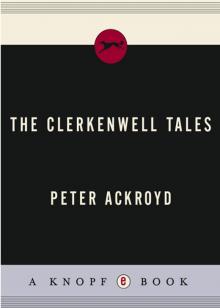 The Clerkenwell Tales
The Clerkenwell Tales The Canterbury Tales
The Canterbury Tales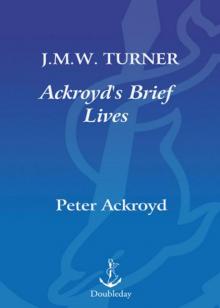 J. M. W. Turner
J. M. W. Turner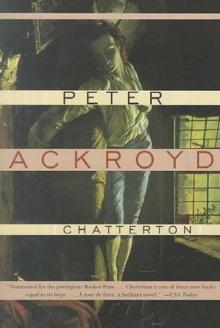 Chatterton
Chatterton The Canterbury Tales – A Retelling
The Canterbury Tales – A Retelling Alfred Hitchcock
Alfred Hitchcock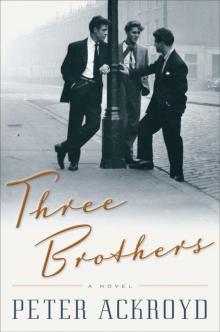 Three Brothers
Three Brothers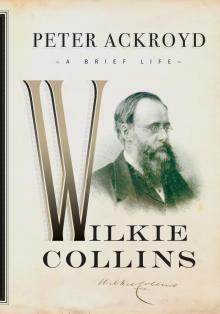 Wilkie Collins
Wilkie Collins Venice
Venice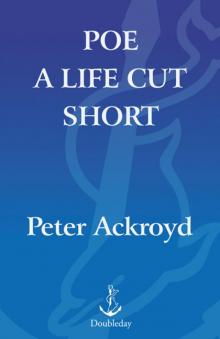 Poe
Poe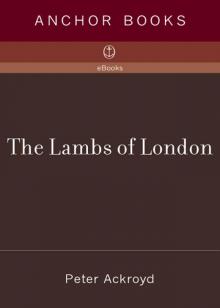 The Lambs of London
The Lambs of London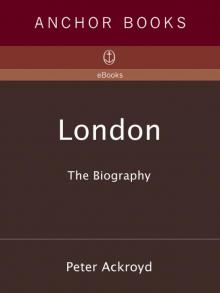 London
London Queer City
Queer City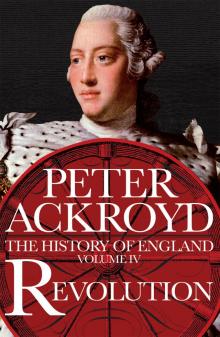 Revolution, a History of England, Volume 4
Revolution, a History of England, Volume 4 Venice: Pure City
Venice: Pure City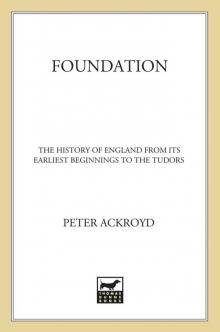 Foundation
Foundation Thames
Thames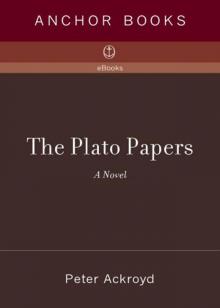 The Plato Papers
The Plato Papers The house of Doctor Dee
The house of Doctor Dee Rebellion: The History of England from James I to the Glorious Revolution
Rebellion: The History of England from James I to the Glorious Revolution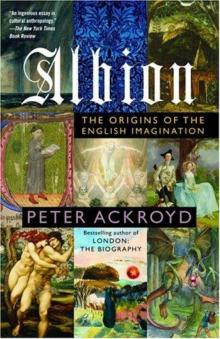 Albion: The Origins of the English Imagination
Albion: The Origins of the English Imagination The Fall of Troy
The Fall of Troy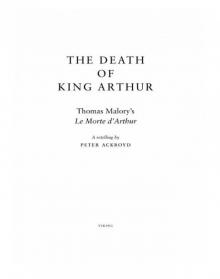 The Death of King Arthur
The Death of King Arthur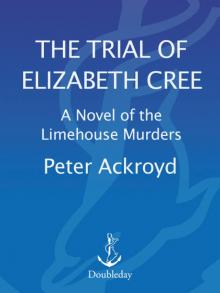 The Trial of Elizabeth Cree
The Trial of Elizabeth Cree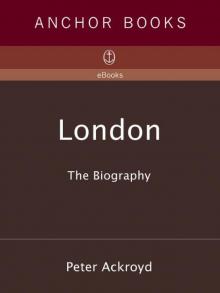 London: The Biography
London: The Biography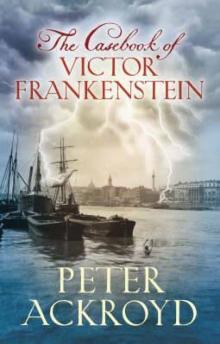 The Casebook of Victor Frankenstein
The Casebook of Victor Frankenstein Hawksmoor
Hawksmoor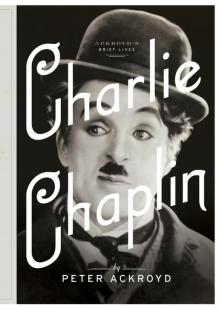 Charlie Chaplin
Charlie Chaplin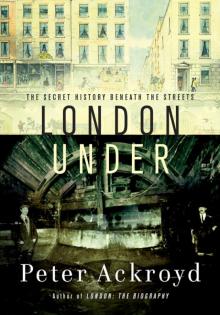 London Under
London Under